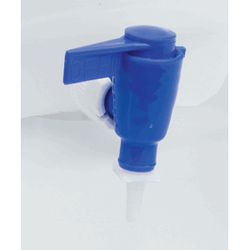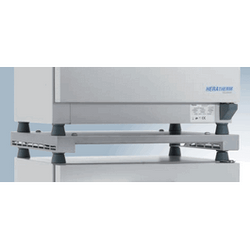Description
QuEChERS Dispersive SPE methods offer a convenient and effective approach for extraction and clean-up of pesticide residues in food and other complex matrices. The robust procedure offers a number of compelling advantages: high recoveries, accurate results, high sample throughput, low solvent and glassware usage, reduced labor and bench space and lower reagent costs.
HyperSep Dispersive SPE Extraction Products use magnesium sulfate to aid extraction, along with either sodium chloride, sodium citrate, or anhydrous sodium acetate for base-sensitive compounds (e.g., folpet or captan). They are supplied in a 50 mL polypropylene centrifuge tube for convenient extractions.
The dispersive SPE products are pre-prepared and optimized for the method at hand, so you will:
• Save valuable preparation time
• Achieve more consistent analytical results due to consistency in products and rigorous quality control
• Get cleaner extracts and lower peak counts as a result of using highest quality, pre-prepared products
QuEChERS Technique •Developed by the USDA Eastern Regional Research Center in 2003, the QuEChERS (Quick, Easy, Cheap, Effective, Rugged and Safe) technique is increasingly becoming the technique of choice for extraction and clean-up of pesticide residues.
The QuEChERS method is a two-step process: extraction followed by clean-up. There are four variations of the QuEChERS method currently in use:
• The original QuEChERS method uses sodium chloride to enhance extraction
• Dispersive AOAC 2007.01 uses sodium acetate as a buffer, replacing sodium chloride
• The Dual-Phase variation introduces PSA and GCB to remove high levels of chlorophyll and plant sterols in the final extract without the loss of planar pesticides (polar aromatics) using an acetone:toluene solvent mix (3:1)
• European Version is similar to the AOAC method, except the extraction uses sodium chloride, sodium citrate dihydrate and disodium citrate sesquihydrate instead of sodium acetate
Image(s) are representative of the product group and not necessarily the individual product.
Sorbent 1: Anhydrous Magnesium Sulfate
Sorbent 1 Weight (mg): 4000
Sorbent 2: Anhydrous Sodium Chloride
Sorbent 2 Weight (mg): 1000
Sorbent 1: Anhydrous Magnesium Sulfate
Sorbent 1 Weight (mg): 4000
Sorbent 2: Sodium Chloride
Sorbent 2 Weight (mg): 1000
Sorbent 3: Sodium Citrate Tribasic Dihydrate
Sorbent 3 Weight (mg): 1000
Sorbent 4: Disodium Citrate Sesquihydrate
Sorbent 4 Weight (mg): 500
Sorbent 1: Anhydrous Magnesium Sulfate
Sorbent 1 Weight (mg): 4000
Sorbent 2: Sodium Chloride
Sorbent 2 Weight (mg): 1000
Sorbent 3: SodiumCitrate Tribasic Dihydrate
Sorbent 3 Weight (mg): 1000
Sorbent 4: Disodium Citrate Sesquihydrate
Sorbent 4 Weight (mg): 500
Sorbent 1: Anhydrous Magnesium Sulfate
Sorbent 1 Weight (mg): 6000
Sorbent 2: Anhydrous Sodium Acetate
Sorbent 2 Weight (mg): 1500
Sorbent 1: Anhydrous Magnesium Sulfate
Sorbent 1 Weight (mg): 6000
Sorbent 2: Sodium Chloride
Sorbent 2 Weight (mg): 1500
Sorbent 3: Sodium Citrate Tribasic Dihydrate
Sorbent 3 Weight (mg): 1500
Sorbent 4: Disodium Citrate Sesquihydrate
Sorbent 4 Weight (mg): 750
Sorbent 1: Anhydrous Magnesium Sulfate
Sorbent 1 Weight (mg): 6000
Sorbent 2: Sodium Chloride
Sorbent 2 Weight (mg): 1500
Sorbent 3: SodiumCitrate Tribasic Dihydrate
Sorbent 3 Weight (mg): 1500
Sorbent 4: Disodium Citrate Sesquihydrate
Sorbent 4 Weight (mg): 750
Sorbent 1: Magnesium Sulfate
Sorbent 1 Weight (mg): 1500
Sorbent 2: C18
Sorbent 2 Weight (mg): 500







